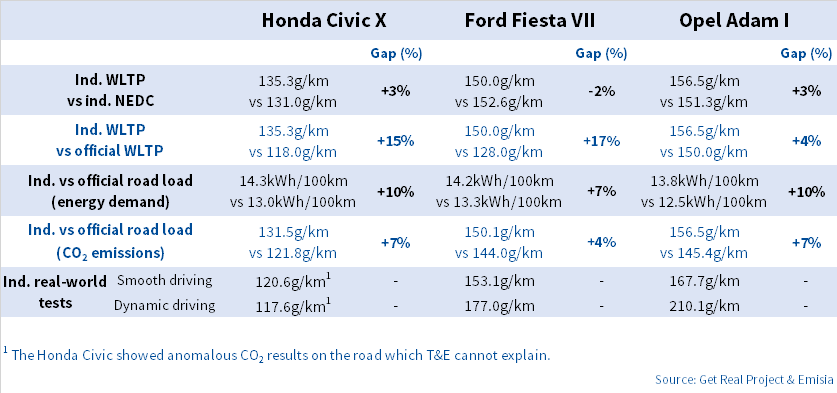
Interested in this kind of news?
Receive them directly in your inbox. Delivered once a week.
WLTP was designed to provide more representative figures for CO2 emissions and fuel consumption. Since September 2018 it has replaced the old NEDC test procedure for all new cars. T&E commissioned the independent laboratory Emisia to test three vehicles using both NEDC and WLTP. The results expose significant discrepancies between official (type-approval) and independent WLTP tests, with an average difference of 12%.
Florent Grelier, clean vehicles engineer at T&E, says: “The independent tests we commissioned show that the new cars CO2 emissions test will not prevent future test cheating. This means consumers will continue spending more on fuel than they were told, and governments will miss their transport CO2 targets. To close this gap, we need real-world checks, including by independent third parties and the European Commission, and for this information to be available to drivers via accurate labelling.”
The gap between official and independent CO2 results on WLTP tests cannot be fully explained. Part of it is likely related to carmakers optimising the so-called road load tests where the aerodynamic and rolling resistance of cars is measured, as the analysis shows. Road load optimisation was a key contributing factor to the growing gap between lab and road figures in the old NEDC test, and appears to still be a loophole under WLTP.
However, one of the biggest findings of the report is that there is a chronic lack of data available to third parties to effectively perform emissions tests. It is, for instance, not possible to assess what exact vehicle models were tested for type-approval, what ‘corrections’ carmakers applied to the test results, or whether NEDC CO2 figures are based on CO2MPAS or double testing.
Florent Grelier adds: “Testing the CO2 emissions of a car without access to all vehicle type-approval test parameters makes tests impossible to analyse and harder for third parties to identify cheating. If we are serious about allowing third parties to help ensure compliance, we have to improve transparency and access to data, notably in order for third parties to explain potential CO2 emissions differences.”
The International Council for Clean Transportation puts the current gap between official and real fuel consumption figures at 39%, leading to an average extra cost of €400 per year for European motorists. Cars and vans account for 14% of EU’s overall greenhouse gas emissions and 70% of EU road transport emissions.
Get Real – Demand fuel figures you can trust (LIFE15 GIC/DE/029 CLOSE THE GAP) is funded under the LIFE programme of the EU Commission.


